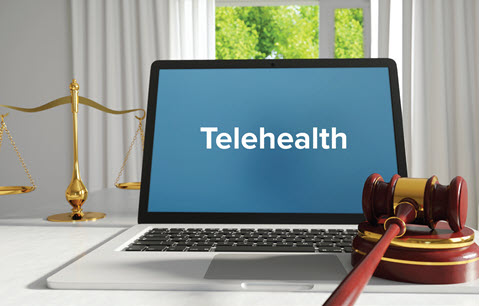Feds Highlight Telehealth Rewards and Risks During the PHE
Caution: OIG continues to add telehealth services-related items to its Work Plan. During the heights of the pandemic, the expansion of telehealth services allowed many providers to keep their doors open and continue to care for patients remotely. But almost from the onset, the feds monitored usage — and fraudulent and outlier behavior — and have now compiled their findings in a new report. The HHS Office of Inspector General (OIG) has vigilantly pursued telehealth fraud and abuse since the public health emergency (PHE) began. In a new report, the nation’s healthcare watchdog points out problems and insight its study revealed, including a plethora of risks to the Medicare program and advice on how to fix the issues. Background: On Sept. 2, OIG released the report, “Medicare Telehealth Services During the First Year of the Pandemic: Program Integrity Risks,” which analyzed the telehealth billing practices of 742,000 Medicare fee-for-service (FFS) and Medicare Advantage providers between March 1, 2020 and Feb. 28, 2021. OIG developed seven measures to determine fraud risks — and identified 1,714 Medicare providers with outlier behavior, the report noted. “Although these ‘high risk’ providers represented a small percentage of the total number of providers included in the Draft Report, these ‘high risk’ providers submitted claims for approximately 500,000 Medicare beneficiaries accounting for $127.7 million in Medicare fee-for-service payments,” explain attorneys Janet K. Feldkamp, W. Clifford Mull, and Lianne M. Foley with law firm Benesch in online legal analysis. Take a look at the measures that OIG used to identify risks, according to the report: Even though some Medicare providers fell into the high-risk zone, that doesn’t necessarily mean their billing behavior was deemed fraudulent or abusive. “We designed this study to identify telehealth providers who warrant further scrutiny,” explained OIG. However, the data did uncover a myriad of issues that the agency intends to continue to monitor and advise CMS on. For example, OIG recommended more transparency surrounding incident-to billing for telehealth services because it’s harder to pinpoint which provider administered the services. “For this reason, CMS should require the use of a modifier to indicate ‘incident to’ telehealth services when clinical staff primarily delivered the service billed under the supervising practitioner’s identification number,” OIG urged in the report. “To do so, CMS should create a service code modifier.” Plus: This isn’t the only fraud advice that OIG has published on telehealth services during the pandemic. In fact, the agency issued the “Special Fraud Alert: OIG Alerts Practitioners To Exercise Caution When Entering Into Arrangements With Purported Telemedicine Companies” on July 20, 2022. Additionally, OIG has several Work Plan active items on the topic and continues to bring enforcement actions against telehealth services fraudsters. “Prudent providers will carefully monitor services to assure compliance with appropriate delivery requirements and billing of quality telehealth services,” Feldkamp, Mull, and Foley say. Resources: Check out the report at https://oig.hhs.gov/oei/reports/OEI-02-20-00720.pdf. View the special alert at https://oig.hhs.gov/documents/root/1045/sfa-telefraud.pdf. Find the Work Plan items on telehealth at https://oig.hhs.gov/reports-and-publications/workplan/active-item-table.asp#example=ftelehealth.


